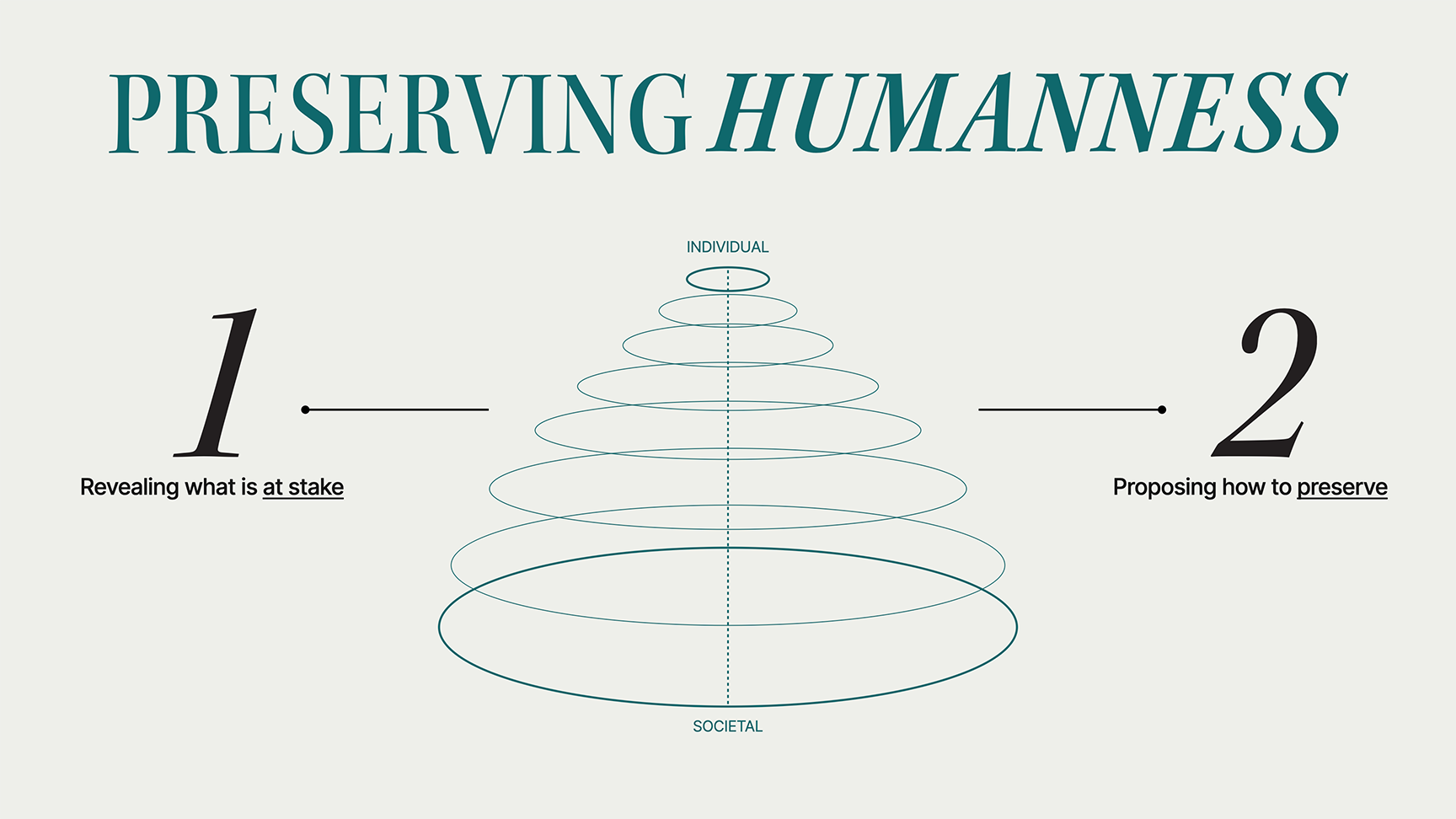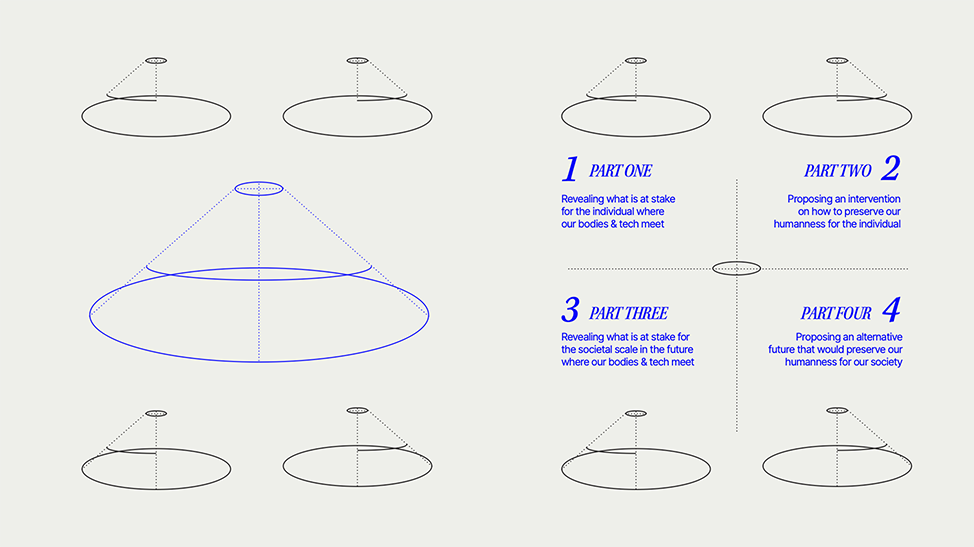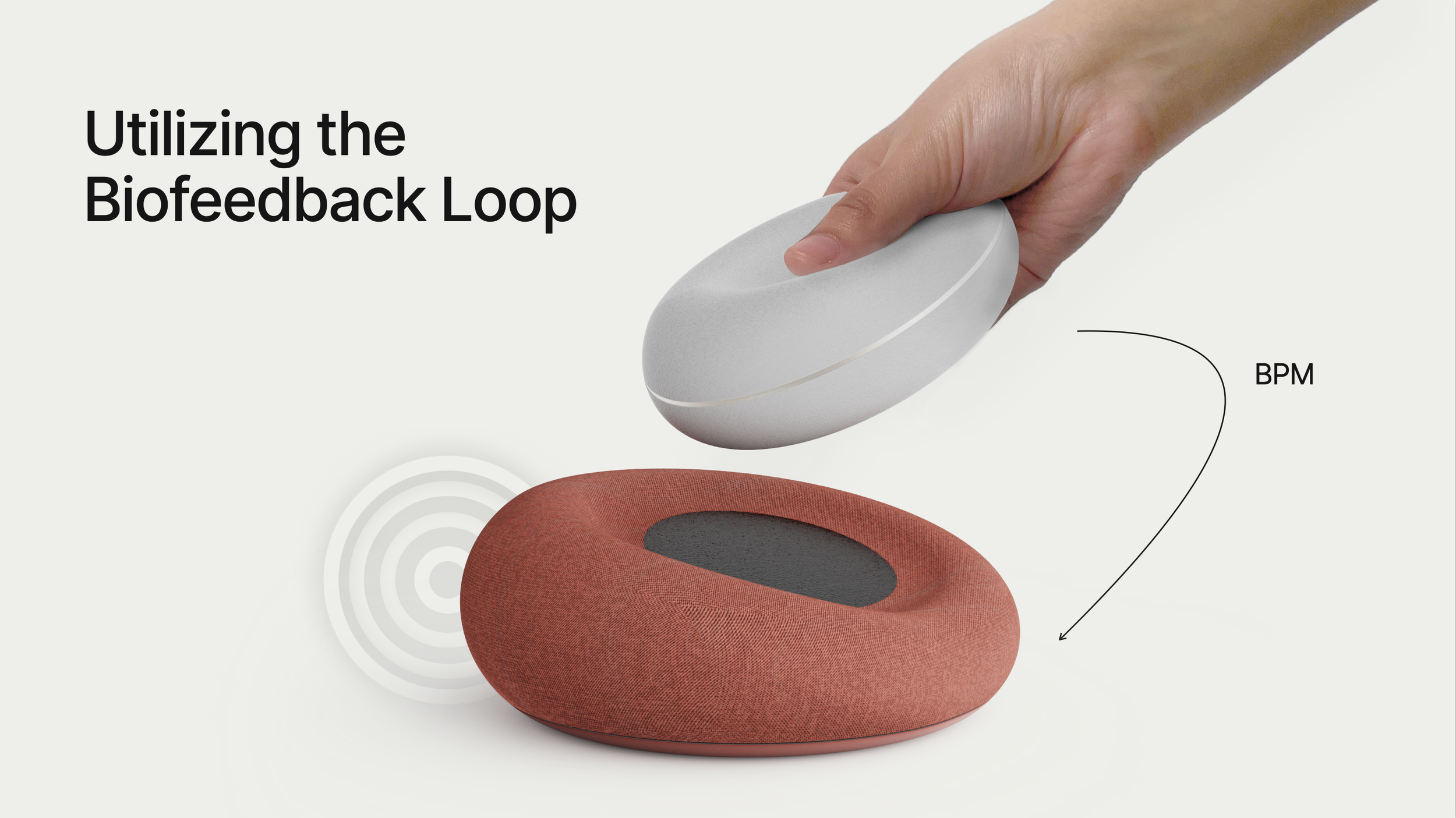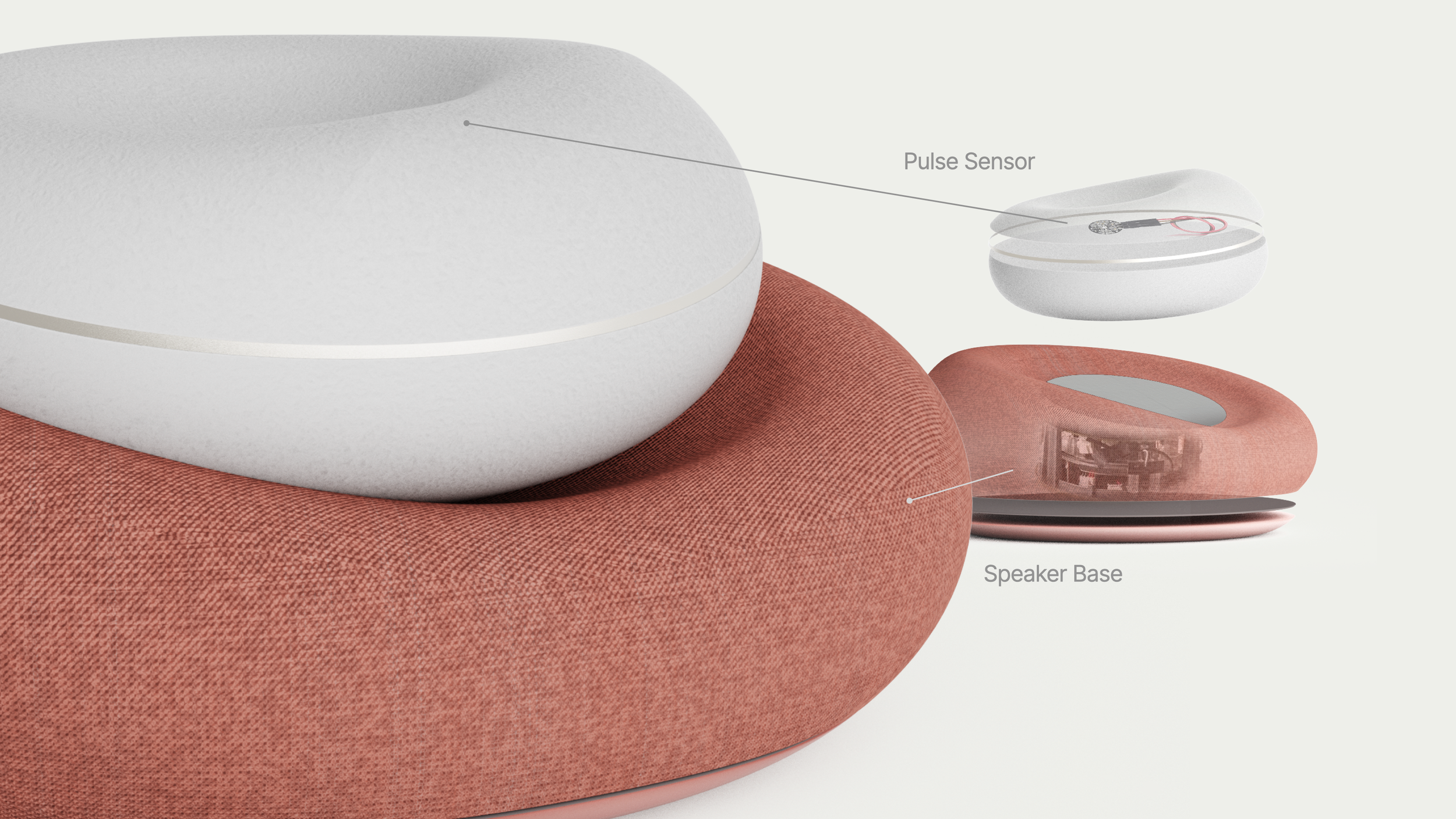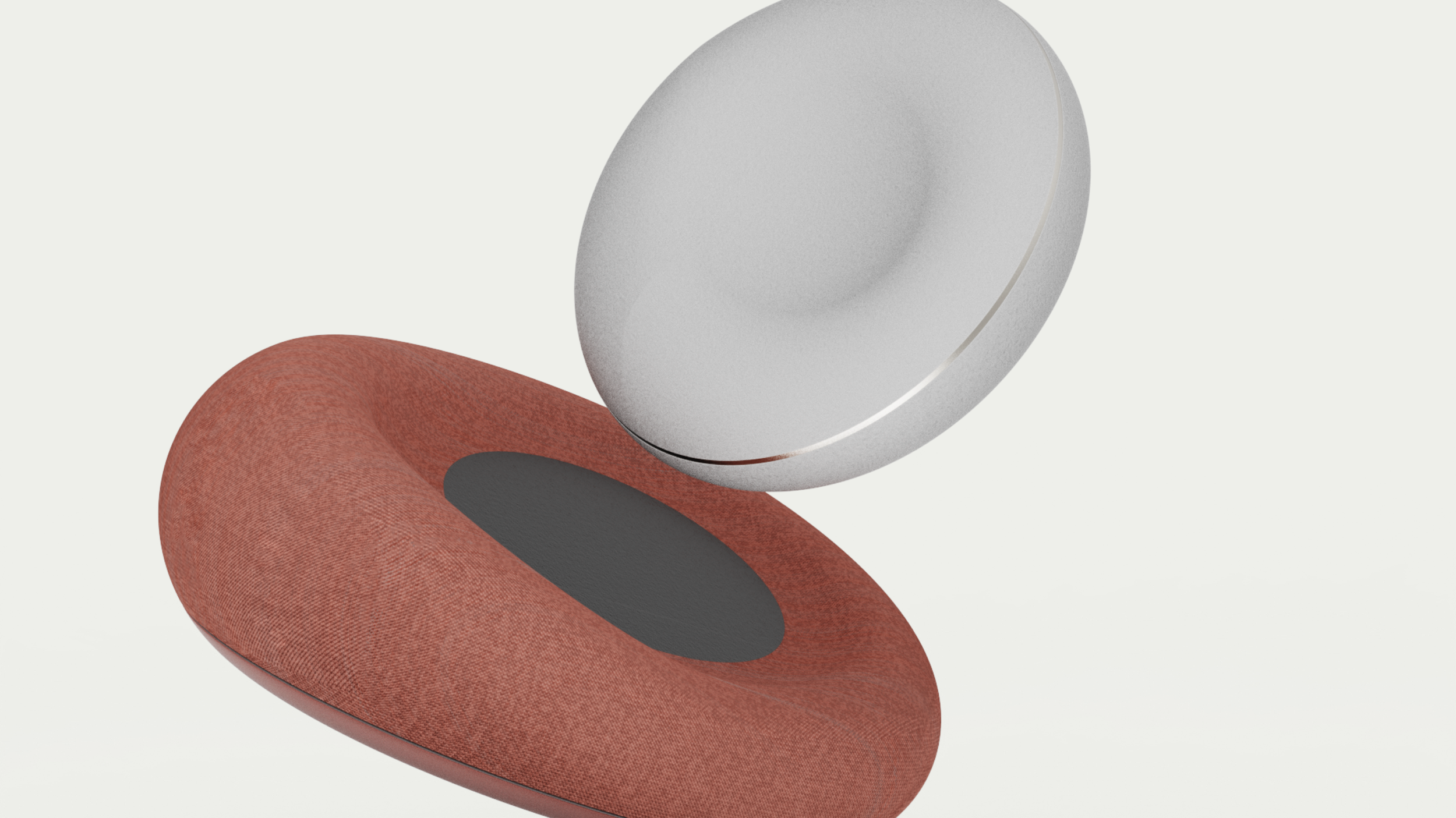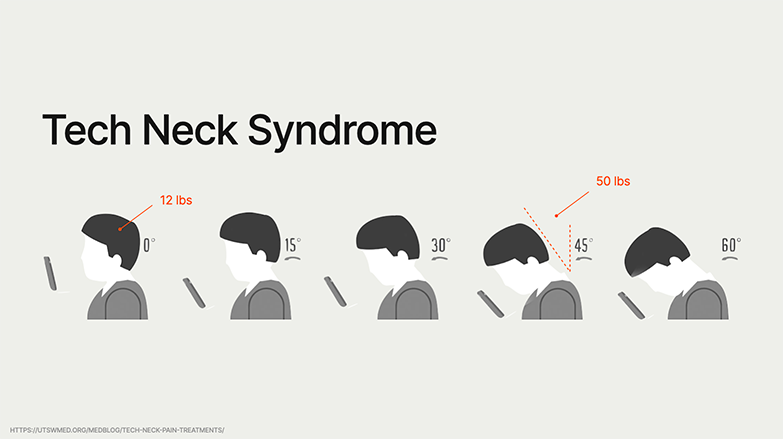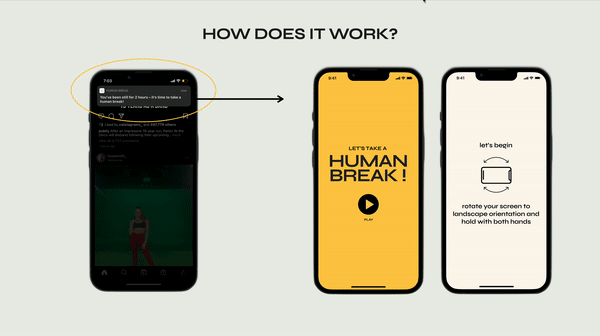Preserving Humanness: Where Bodies and Technology Meet
How are we being shaped by technology? How will our bodies look and feel in the future? Who are we without technology? These curiosities have steered Erika Choe's thesis, Preserving Humanness: Where Bodies and Technology Meet.
Humans have always been deeply entangled with technology. From the first stone tools to modern phones and computers, technologies that surpass our physiological capabilities and enhance our experience of the world have shaped human history.
Technology makes what was impossible, possible. And while this can often be positive, it also holds its dangers. 27 years ago, Carl Sagan shared concerns about the impact we as a civilization would face if a technological monopoly strips us of our agency. In his book The Demon-Haunted World, he writes, "I have a foreboding…when awesome technological powers are in the hands of a very few…[the people's] faculties [fall] in decline, unable to distinguish between what feels good and what is true."
Technology can make us forget about our humanness.
Along with research on the brain-tech convergence space, posthumanism politics, and Timothy Morton's Hyperobjects, the following two questions became the backbone of Erika's thesis:
What is at stake where our bodies and technology meet?
How do we localize and safeguard our humanness?
Before tackling these bigger questions, Erika made it a point to outline the deliberate choice of the word "humanness" in her thesis. Humanness, in short, is the state or quality of being human. It is derived from humanity—which is specifically referring to the human race. “This distinction is important,” Erika explains. “We are living through the age of the Anthropocene, also known as the time during which humans have had a substantial impact on our planet. Using the word humanity alludes to extractive and hierarchical methods to prioritize the survival of the human species as a whole.” It also comes with the baggage of Western supremacy, patriarchy, and oppression. "Humanness" is Erika’s proposal for a post-anthropocentric term that focuses on how it feels to be human in our physical world. It approaches the concept of safeguarding what it means to be human with humility.
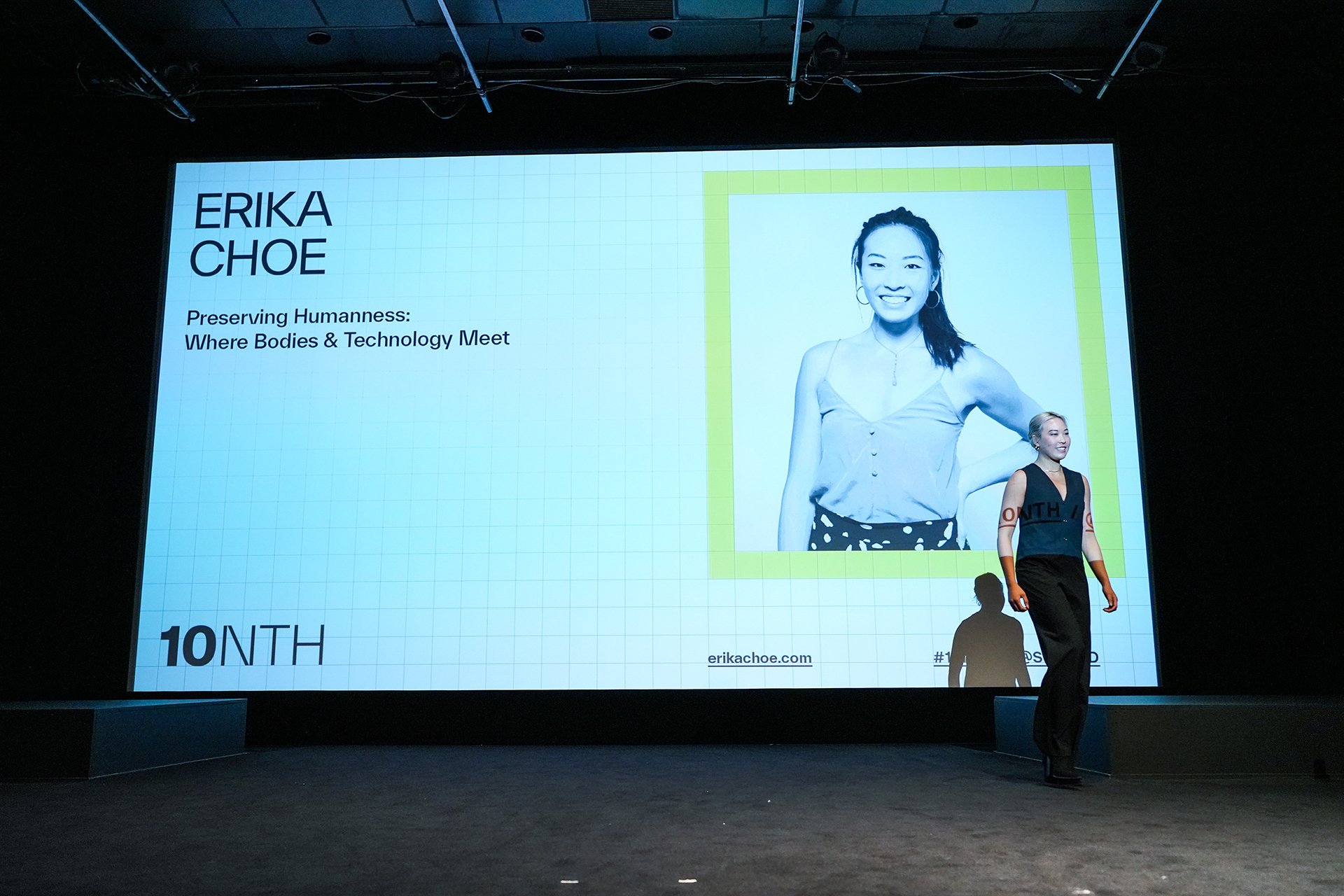
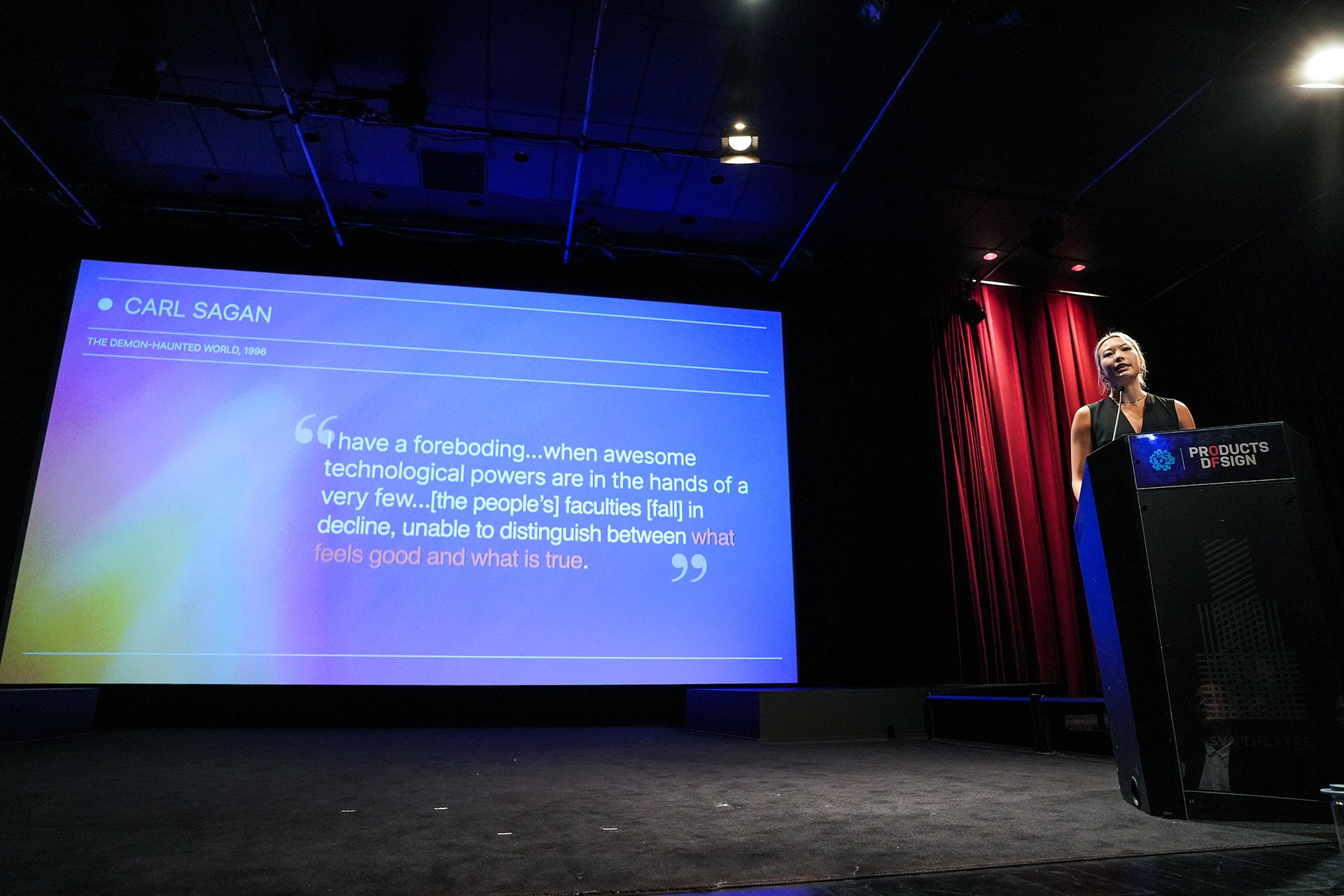
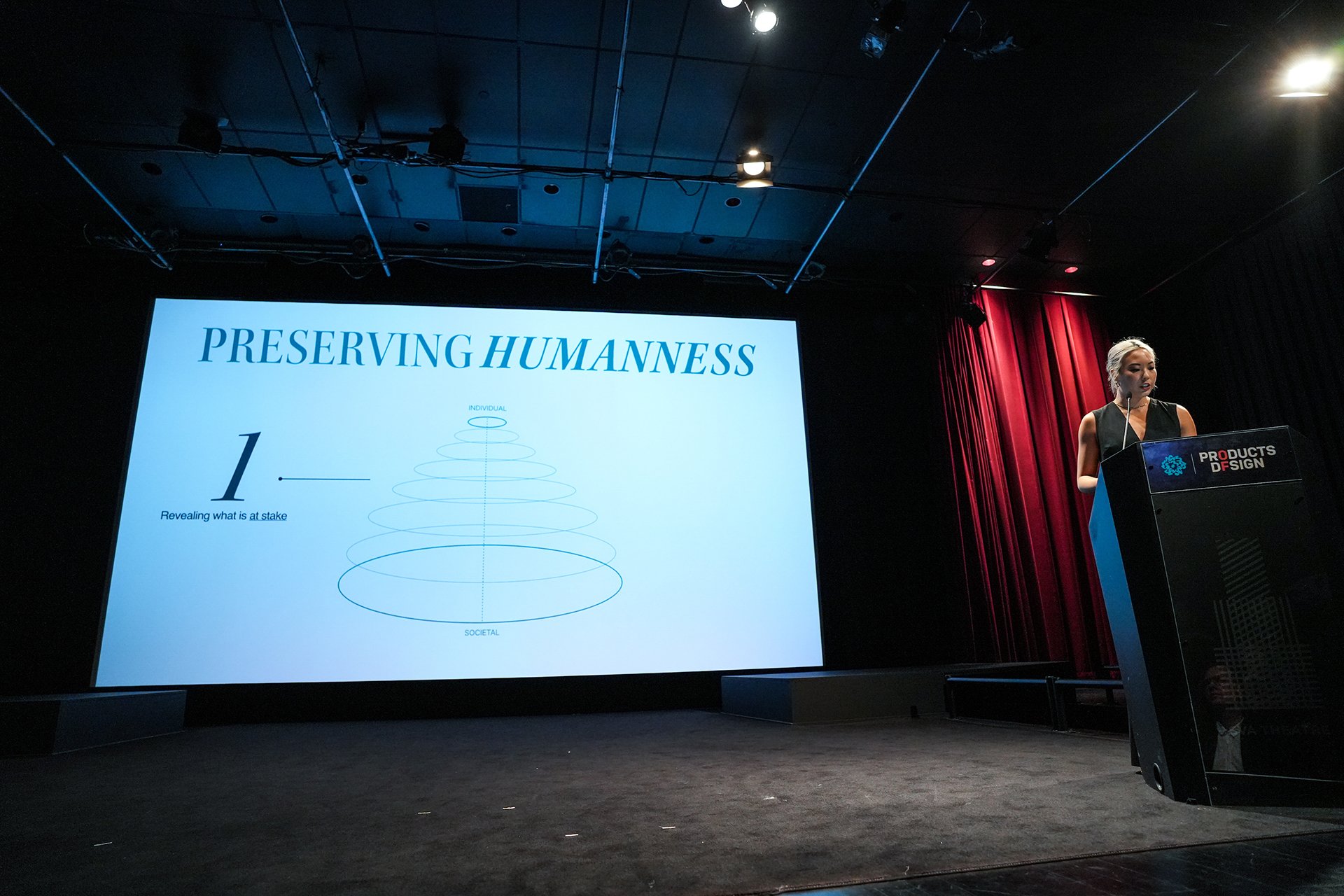
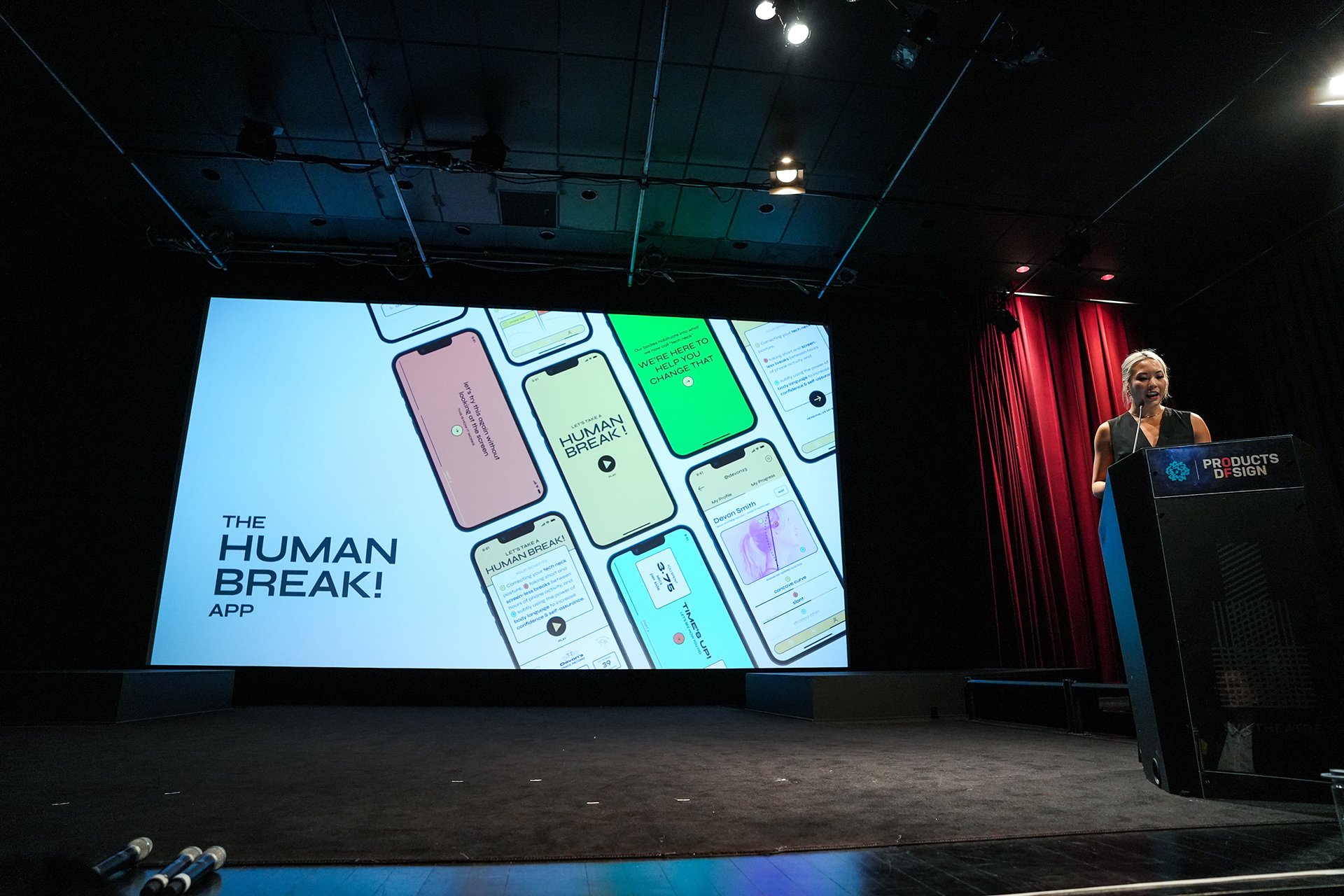
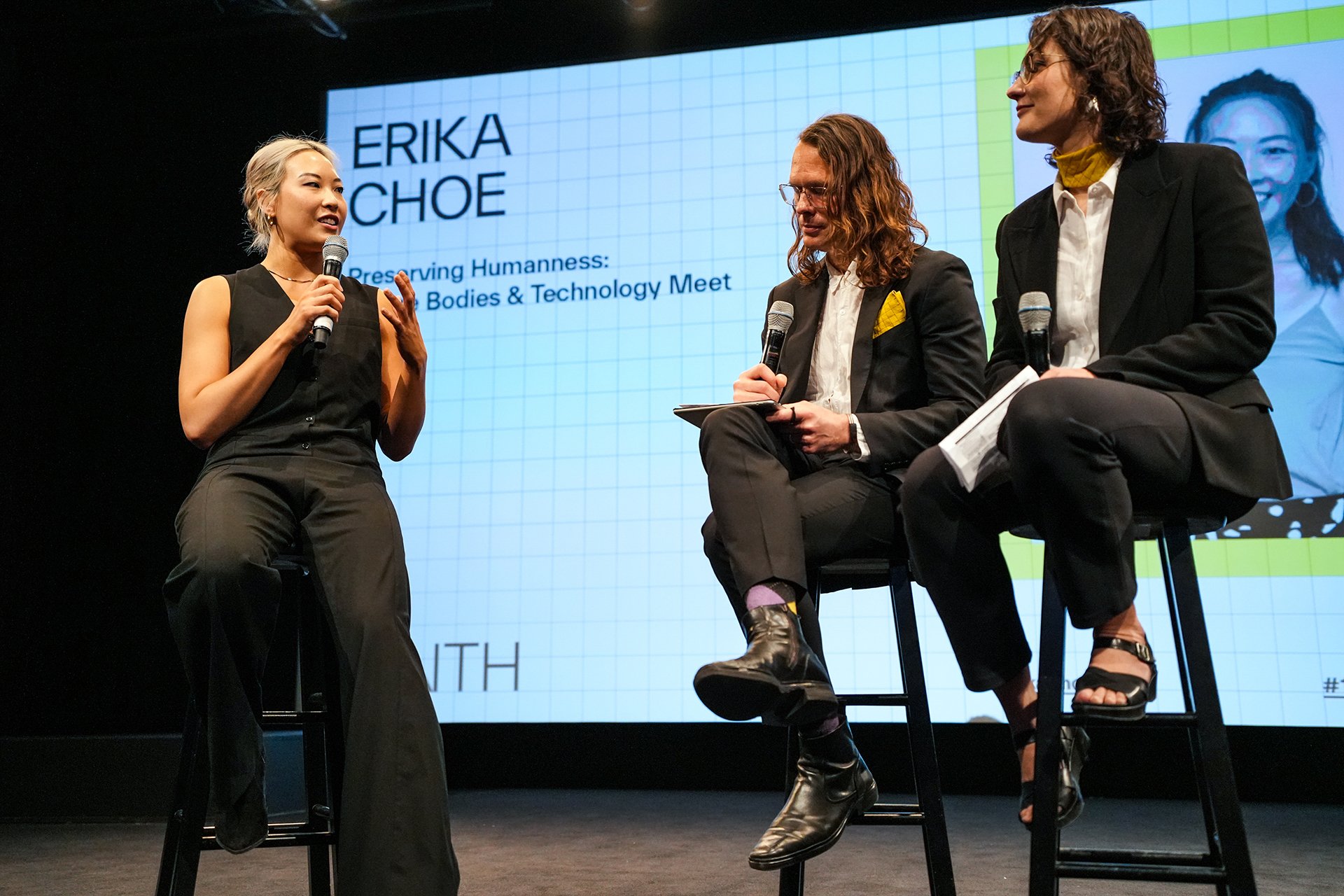
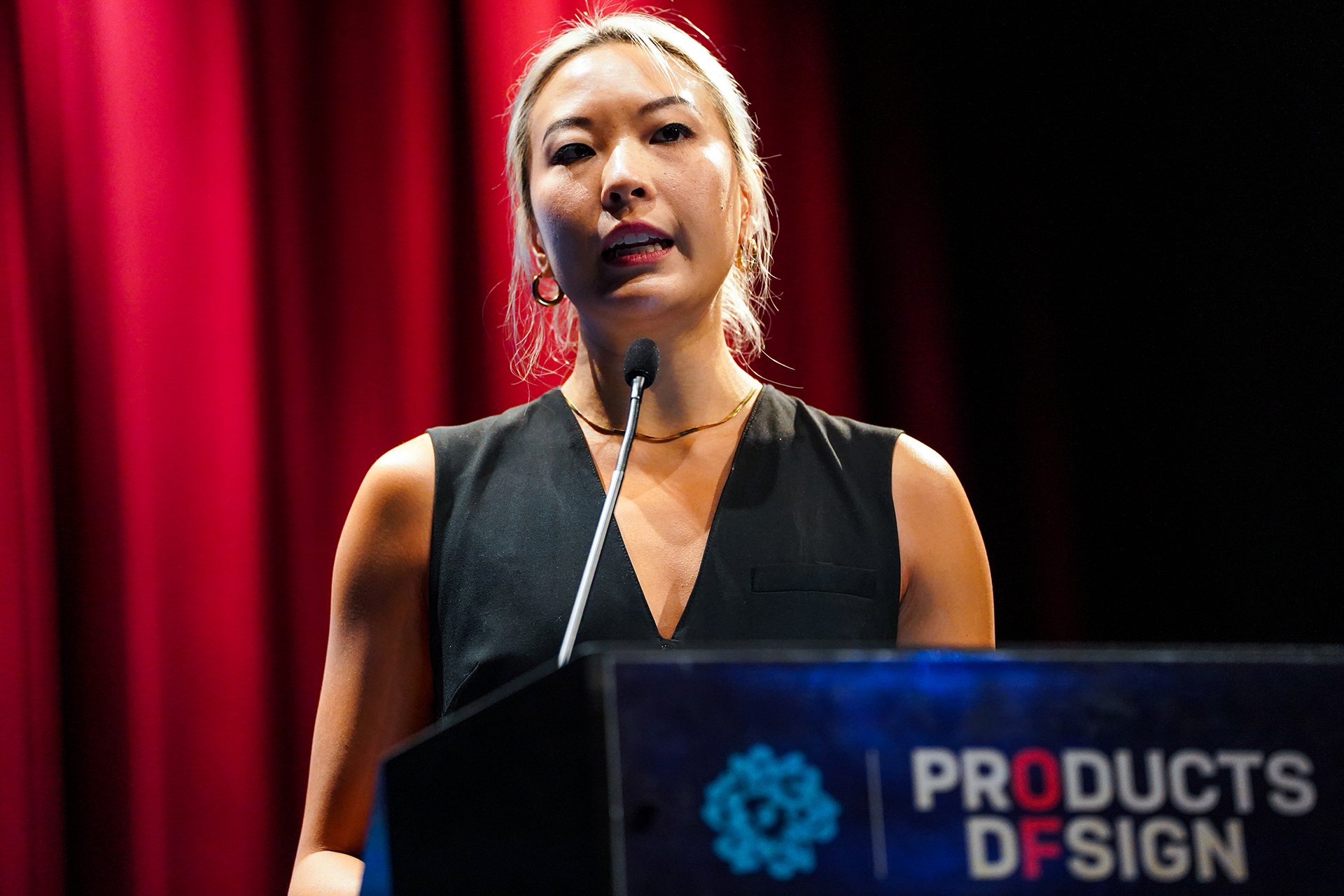
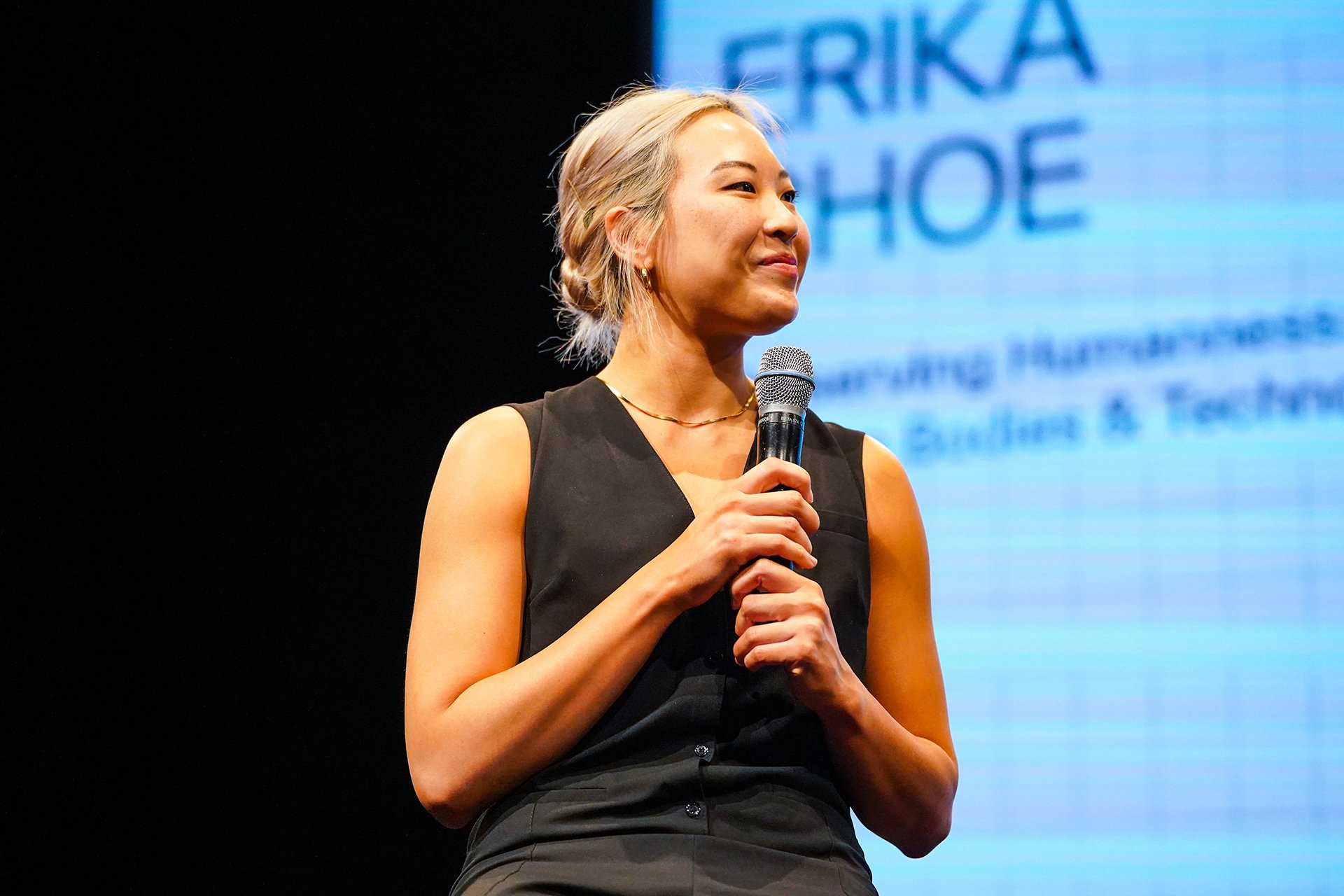
How do we safeguard our humanness against the onslaught of technological innovations shaping our reality? Erika unveiled that the impact is direct on an individual and societal scale, and this was the lens she used to structure her thesis. She approached both of these scales in two parts: first, designing experiments to reveal what is at stake as humans become more dependent on technology; then designing proposals that aim to preserve our humanness.
In this graphic, the y-axis defines the direction of experiments meant for the individual and experiments meant for the collective. The x-axis defines experiments Erika designed that revealed how our humanness might be at stake as we become more dependent on technology, and the experiments she proposes to preserve it.
The x and y axes allowed her to structure these experiments into four quadrants:
BPM
When we think about social media and its impact on our psyche as a generation, we can identify its role as reinforcing a behavior and our physiological response. It is no secret that creators of these influential tech products employ tactics of dopamine hits to generate an addiction response to their products. This is how they pull in and maintain attention and activity on their platforms. Billions of dollars have been invested in the design of these digital products to reinforce their usage. Since its usage has inadvertently led to such a rise in anxiety and depression, it has supported the very physiological behavior in our bodies and nervous systems.
What if we heighten our ability to witness how technology reinforces certain behaviors?
To evidence this reinforcing feedback loop that we can't seem to remove ourselves from, Erika created a speaker that played music to the speed of a pulse measured. Taking the parallel concepts of beats per minute literally, she translated the measure of a heart rate from a pulse sensor into a mathematical equation that altered the playback speed of mp3 files.
Then, to test this product, Erika assembled an Arduino Wave Shield kit and its intricate parts to make a simple speaker from scratch. “With a couple songs stored in a memory card, the speaker could play the mp3 files at warped speeds according to how fast or slow my heart rate was.”
Human Break App
Technology has made us forget about our physicality, corporeality, and humanness. Many of our jobs require the use of a computer, and often we get so absorbed we neglect our body's needs. These technologies have interrupted the ordinary rhythms of our bodily existence. Linda Stone, a researcher with Microsoft, coined the term "email apnea" to describe this phenomenon.
Technology has made us forget about our physicality, corporeality, and humanness.
75% of the world is hunched over their smartphones daily. Our upper body and neck posture has slowly arc-ed forward in a concave and cowering position as our muscles habituate to this chronic forward position. The medical field has dubbed this posture as "Tech Neck Syndrome" or "Text Neck Syndrome."
Can we design a better way for people constantly on their phones, who struggle to peel away from their screens, to take short breaks that benefit their body and brain? To tackle this, Erika created the "Human Break App," a micro-intervention that prompts phone users to take a screen-less, embodied break. The app aims to tackle tech-neck syndrome in an easily adoptable manner by interrupting habits of doom-scrolling with notification-based reminders.
Can we design a better way for people constantly on their phones, who struggle to peel away from their screens, to take short breaks that benefit their body and brain?
Bio-future Forming Studio Stories
Where these technologies become commonplace, what does that mean for those who choose not to implant their brains or bodies? What does it mean for those who do not have access to such enhancement technologies? In the context of genetic engineering, pregnant parents can now use prenatal screening to identify neurodiversity and, as a result, make pre-life decisions to eradicate or prevent such neurodiversities. When does parental choice become eugenics? What it means to be human changes according to the larger separation between those who have access to enhancement and those who do not.
What it means to be human changes according to the larger separation between those who have access to enhancement and those who do not.
To navigate these complex questions, Erika attempted to imagine a speculated world where augmentation is commonplace and has changed how our bodies function and adapt to climate crises. Written from the point of view of a woman behind the front desk of a futuristic bio-augmentation studio, we are introduced to two of her patrons, each coming from different walks of life. The stories are based on a speculated world in the year 2100, where adapting to the climate crisis is prioritized for survival.
The stories placed the responsibility of augmenting the self in the hands of the individual, where changing the ways our bodies functioned to adapt to the climate crisis was an individual responsibility. In this scenario, the state, or society's organizations, had placed the burden of survival in the hands of the individual rather than making it a collective responsibility of the systems that govern how we operate as a society.
These bring up questions of who is held accountable for how we survive our climate crisis in the future. What systems will successfully drive community building and resilience, and what types will lead to unforeseen consequences that might pull us further away as a society and aggravate stratification? We have yet to fully comprehend the potential unintended consequences of our rapidly developing human-enhancement innovations. And that createsconversation around these topics challenging to conceptualize and discuss. But by tapping into people's emotions through fiction, we can utilize the power of storytelling to engage and prompt considerations for these complex topics.
State of Being Apothecary
It is essential to critically examine the lens we carry forward in our modes of storytelling and strive for more inclusive, diverse, and holistic visions of the future that challenge traditional biases and promote a more equitable and sustainable worldview.
What if we shifted our technoprogressive transhumanist perspectives into Haraway’s posthumanist perspective?
While we continue to entangle ourselves with technologies that augment us, how do we preserve our humanness? What if we tied people's wish for enhancement with our collective responsibility towards our planet earth and our communities? Can we meet our basic needs interdependently rather than independently? What if augments were not for human optimization but for corporeality and connection? How do we prioritize our humanness over-optimization and anchor us in being rather than in winning? Erika says that she decided to turn to performance art and installation as her mode of experimentation for this topic.
Erika’s installation, called the State of Being Apothecary, incorporated magical realism and offered alternative augments for embodied healing. The Apothecary itself was a speakeasy-style space, and for two hours on a Sunday night, offered an intimate healing experience to explore these theories in person. Using the politics of posthumanism, Erika played the role of a healer that offered remedies that brought people together for one another.
“State of Being Apothecary was designed as a response to the disembodied and dematerialized nature of our techno-futures,” Erika shares. “It imagined a scenario where the focus of technological augmentation were presented through a posthumanistic and anti-capitalist lens.”
Challenging conventional norms of technological advancement, this performance-based experiment prompted its audience to question the dominant narratives of technological progress, inviting us to consider alternative futures where the well-being of our community and the environment takes precedence over profit-driven and competitive motives. At the same time, the performance installation raised a larger issue that remains in this narrative – why do we crave drive-through transformation? What habits have contributed to our obsession with one-stop-shop solutions?
* State of Being Apothecary photos by Whitney Browne
Where technology has become second nature to our lives,
how do we recover the magic of solid and tangible things that ground us in our state of being so we no longer crave immediate gratification?
To learn more about Erika Choe’s work, take a look at her projects in more detail at erikachoe.com.



